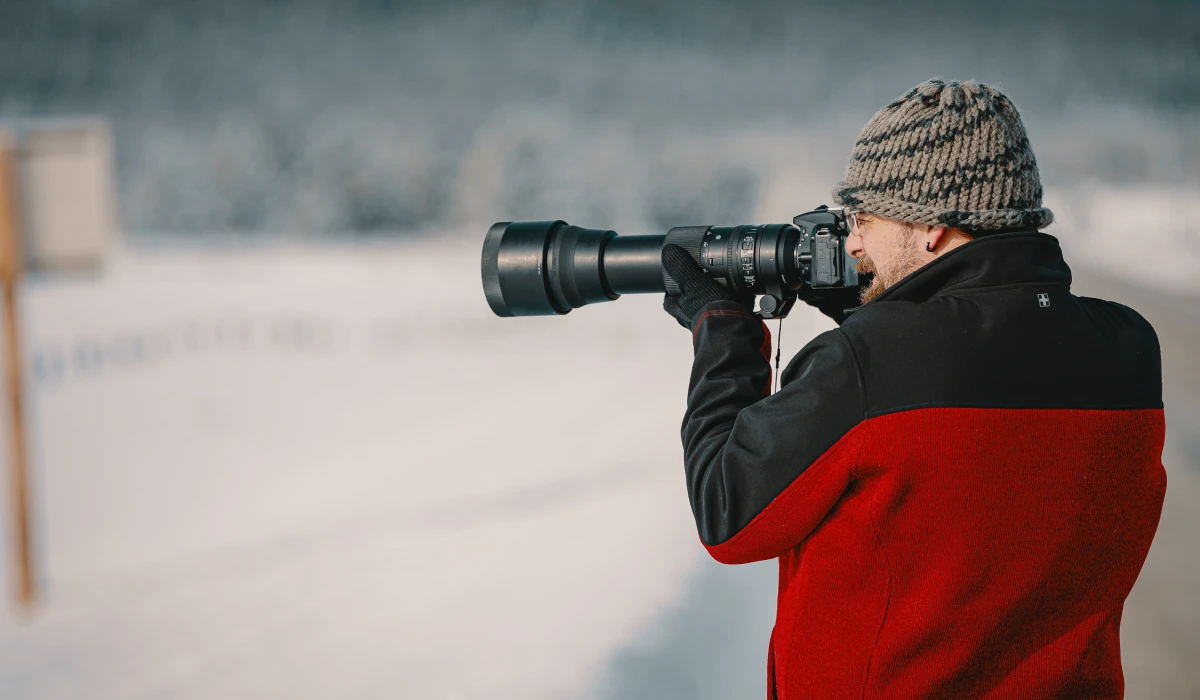Introduction
Nikon D5600 is an excellent camera both to start in the world of photography and to deepen and improve as a photographer. The image quality is exceptional within the mid-range of DSLR cameras.
Nikon D5600 DSLR Camera – Technical Characteristics
First, we are going to see the most important technical characteristics in this quick tab:
Sensor
- APS-C CMOS (23.5 x 15.6mm)
- 24.2 megapixels
- Minimum ISO: 100
- Maximum ISO: 25,600
LCD Screen
- Size: 3.2 inch
- Articulated and rotatable
- Touch screen
AF Autofocus System
- 39 focus points, 9 of them crosshairs located in the central area.
Low Pass Filter (OLPF)
- No low pass filter (better contrast and detail in photos).
Continuous Shooting
- 5 fps (5 frames per second)
Drums
- 970 shots (with Bluetooth / SnapBridge system off)
Video
- Full HD 1080 / 60p
- Articulated screen: Yes. Fully articulated allows selfie mode
- External microphone jack: Yes
Other Features
- GPS
- WiFi connection
- SnapBridge connection (Bluetooth)
- Time Lapse mode
- HDR mode
Nikon D5600 – Highlights / Review
Speaking of photography, for hobbyists and advanced amateurs, the Nikon D5600 is a safe bet, as were the D5500 and D5300 already.
The Nikon D5600 is a very complete and balanced mid-range reflex camera with an incredible performance in photography.
Image Quality
The image quality is exceptional. Aside from the sharpness provided by the 24MP, the D5600’s sensor offers a dynamic range of about 14 light stops.
Dynamic range tells us how the Digital DSLR Cameras perform in scenes with high contrast between light and shadow if it can capture as much detail in the brightest areas as in the darkest areas of the scene.
Dynamic range is closely related to electronic noise. A camera with a high dynamic range is normally a camera that performs very well in noise. And that will allow us to develop the RAW image to raise the brightness of the shadows to show more detail, without noise (grainy) spoiling the final version of the photo.
In that sense, the D5300 / D5500 / D5600 series would be up there with many higher-end Nikon Digital SLR Cameras. Remember that the differences between ranges, especially between the mid-range and the professional high-end, are more related to design, ergonomics, functions, and aids to the photographer, not so much with the image quality that comes out of the sensor.
Keep in mind that to get the most out of the sensor, in terms of sharpness, for example, you will need a lens of a certain optical quality, for example, you can check it with a fixed focal lens, a 50mm f / 1.8 for example or in the case Nikon’s 35mm f / 1.8
It does not mean that with the kit lens, 18-55mm, you cannot take good photos. But when it comes to sharpness, that lens is a bottleneck.
Focus System
In DSLRs, there are two focus systems. Phase detection focus, which is activated automatically when we use the camera’s optical viewfinder. And the contrast-detection focus that is used when using the rear screen (live view)
Phase detection focusing is usually much faster, especially on these cameras. In the case of the Nikon D5600, the focus is very fast and precise, on far with or above any other Digital DSLR Cameras in its range.
The camera has 39 focus points spread over different points in the scene. We can select with which of these points we want to focus. For example, if we are taking a portrait, we first frame and then select the focus point that is closest to the person’s eyes.
The central point and 8 other points are of the cross point type. These points are more precise since they allow us to detect vertical and horizontal contrast areas in the area of the scene that we want to focus on.
The focus system in Live View mode (when the scene appears on the rear screen), which is used for video, for example, is considerably slower.
The Nikon D5600 allows you to focus and shoot from the rear screen with the simple touch of your finger. This option is useful for situations in which it is more comfortable to view from the screen than to use the optical viewfinder: for example for macro photography, for high and low, situations in which we have to put the camera above our head, shooting from a tripod, etc.
The video autofocus system on the D5600 has improved a lot over previous models, but it is not the best system.
Ergonomics / Usability
Both the D5600 and the D5500 opt for a smaller format.
It is a fairly compact camera, we are not going to be lazy to take it out. With the kit lens or with an off-road lens (wide focal range) we can use it perfectly for strolling around, going out to the field, or traveling without any problem.
The grip is very comfortable, as it is usually on all Nikon DSLRs.
Nikon D5600 Reflex Camera – Controls and Keypad
The control dials are easy to use. The dial for exposure compensation, aperture, speed, etc. is at the level of the thumb.
Nikon D5600 Reflex Camera – Articulating Screen
The screen is fully articulated and tactile. As we have already mentioned, this comes in handy for situations in which it is more comfortable to work from the screen than to use the optical viewfinder, and it leaves us more freedom of movement.
Nikon D5600 Reflex Camera – Connectivity
In terms of connectivity, the main novelty of the Nikon D5600 is the Nikon SnapBridge system. It allows the Professional DSLR Camera to easily connect with a mobile phone or tablet. This system allows for example to automatically copy the photos to the mobile (JPG) at the time of taking the photo. It also allows you to use your mobile device as a remote control.
Nikon D5600 – How About For Video?
The Nikon D5600 can record Full HD at 60 frames per second: 1080 / 60p. This will allow us to take some interesting shots in slow motion or for videos that go better with that refresh rate, for example, sports.
The image quality is very good. The video that comes out of the Professional DSLR Camera is very useful if we do not have to do somewhat aggressive editing.
The D5600 codec provides a bitrate of about 24Mbps. The bitrate or bit rate is related to the amount of information or rather the amount of compression that the video information carries. The higher the bitrate, the more possibilities when it comes to adjusting the color, contrast, saturation, etc. in editing to maintain an acceptable quality.
From the point of view of video recording, it is a camera designed more for home use or for productions that do not require significant post-production.
The autofocus and object tracking system in the video is regular. It is not one of the best cameras in this sense. It is sometimes difficult to find the focus, and when changing the focus point, the transition is usually somewhat abrupt. The best combination is with AF-P (stepping motor) lenses designed for smoother transitions in video.
If we are going to be behind the camera (that is, there is a camera operator) working with manual focus with a little experience, very good results can be obtained.
The Nikon D5600 has an external microphone input. We can connect a lavalier microphone or a directional shotgun microphone to it and we will greatly improve the audio quality.
So if you had a choice and connectivity issue is not important to you, you can go for the Nikon D5600 model. The touch screen comes in handy sometimes, but it is not a fundamental feature, it is simply a convenience in certain situations.









